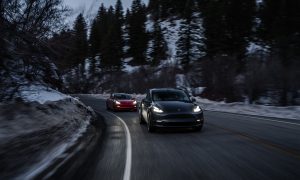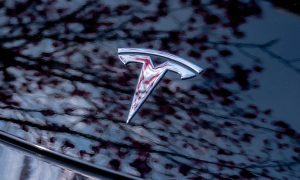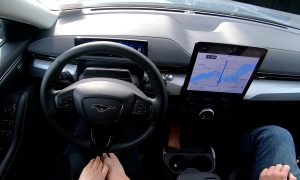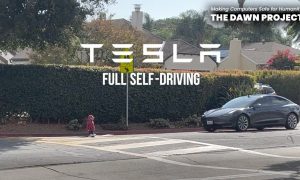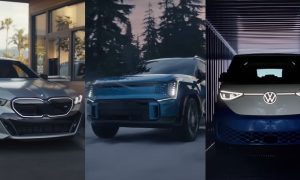Firmware
How Tesla Autopilot Changes Your Perception of ‘Driving’
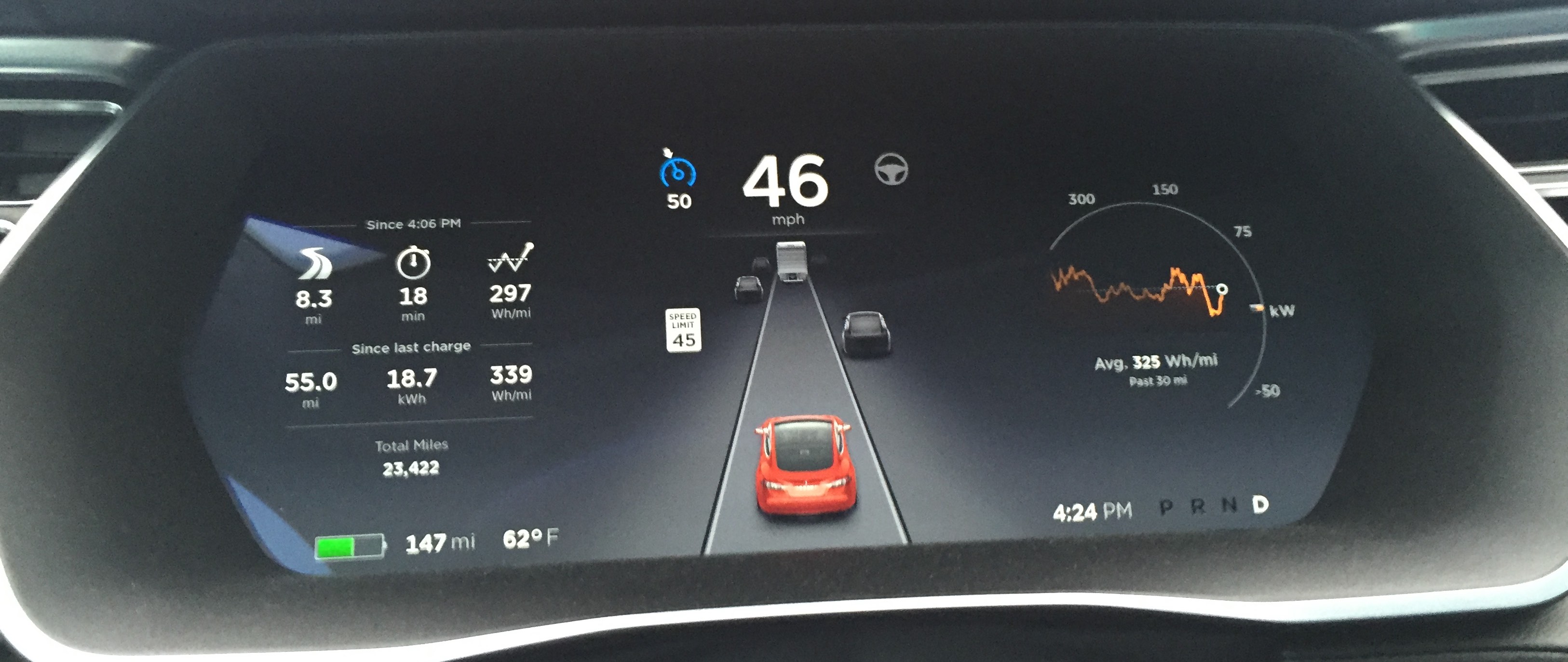
So what does driving boil down to with an increasingly improving Autopilot (AP)? We hear and think and talk a lot about how great Tesla’s equipped cars are at it. Even Car and Driver has declared Tesla’s Autopilot the winner among several semi-autonomous driving packages.
The Autopilot suite of features is remarkably easy to control and as a result has reshaped my definition of what ‘driving’ has really become. Driving as I know it has become a sequence of taps and flicks, all thanks to the ease with which Tesla has allowed me to regulate the vehicle using AP. Not just turning it on and off (which is also super easy) but selectively controlling its features.
As is often the case when I get behind the wheel, this week I came up with yet another revelation. It is absolutely amazing how much say I have in getting the car to do what I want, when I want and how I want. All through a single stalk. Even more amazing is how easy and intuitive my commands are and how quickly she obeys.
My usual commute is a mess. It looks something like this:
- 2 miles at highway speeds (55 – 65 mph)
- Slow to < 10 mph as we approach an adjoining highway
- Drive .5 miles in stop-and-go traffic (5-25 mph)
- Speed up as traffic breaks up but immediately enter a construction zone (25-50 mph; temp speed limit: 45 mph)
- Drive 2 miles at greatly fluctuating speeds with construction-esque lane markings that range from dotted to solid, faded to doubled, old to new.
- Leave construction zone, enjoy the 55 mph speed limit for about 30 seconds
- Approach the next construction zone/congestion area and spend 1 mile in the exit lane waiting to get off (5-35 mph)
Autopilot is a savior in standard stop-and-go traffic, where you know you are going between 5-25 mph. It also really excels when those stretches break for small distances and give way to near highway speeds. When you consider the fluctuating speed limits (permanent 55 vs. periodic temporary 45 zones in the construction) it requires a little more thought. Add in inconsistent lane markings and you start to wonder if Autopilot is really appropriate. Except, Autopilot is a well-trained obedient pup, more than happy to execute commands quickly and frequently if the master so desires.
When I first get on the highway and am cruising at usual speeds, I may or may not engage. Once those first 2 miles are behind me and I approach my first jam, I quickly glance at my dash screen, verify the blue lines and available steering wheel (Autosteer) symbol and pull my lower steering wheel stalk toward me. This all occurs in what I estimate to be no more than 2 full seconds. I only use the pressure of two fingers to pull the stalk toward me, double time, and instantly hear the chime that tells me my car is happy to comply and take over driving for a bit. I usually flick the stalk down to change the max speed to match the flow of traffic so as to not speed up too suddenly if a car moves out from in front of me. Again, this action is quick and requires very little thought or effort. The car is more than happy to comply and instantly show me the set speed. Without thought, my following distance is set to 7, the conservative tolerance I last (and almost always) used. But wait, that’s the second New Jersey driver to cut me off. Better take the half a second to turn my stalk and decrease my following distance a bit.
When that formerly infuriating stretch of congestion is over and we’re ready to go faster, I flick that same stalk up a few times. Small flicks give me 1 mph increments, a medium flick gives me 5 mph increments. You become quite used to the required pressure after only a few uses and it becomes as intuitive as brushing your teeth. I also turn my stalk to bump back up my following distance to a 7 because at higher speeds, that is where I am comfortable.
Before I can even enjoy moving or the sound of the elevated subway train rolling beside me, I remember that the road markings are about to go haywire. The old lines are still visible and new, solid lines cross them in an unnatural fashion to direct cars away from temporary walls. When following another car, Autopilot rarely misses a beat. It is both willing and able to figure out where it’s supposed to go but my own comfort level desires some intervention. At this point, my casual grip on the wheel increases just a touch and I gently provide some resistance. By now, my muscles know exactly how much pressure is required to get that sweet chime letting me know I’ve disengaged Autosteer. My screen confirms my desires: TACC is still engaged. The car happily hands over the steering reigns while keeping speed.
Just a short distance later, when the lane markings are clear again, I wish to give up steering responsibilities once again. Another gentle double pull of the stalk toward me and the chime tells me “I’m back.” Glance, flick, increase speed.
Sadly, the fun is short-lived. It’s time to move into my exit lane, which is questionably narrow due to the construction and has no painted lines on the right side; no shoulder, just wall. As a result, I desire to take back full control and without much thought, tap the break pedal ever so gently. Another chime awaits and my brain makes both my hands and right foot act accordingly.
In what amounts to a few miles and 20 minutes, I’ve gone from AP set at a medium speed to AP set higher, to TACC only, back to AP, then into manual mode. All of these transitions are seamless, quick, intuitive and easy. I control which features I want the car to handle and which features I want to control myself. My brain appeases my changing desires and also seamlessly transitions from no hands and no feet to hands only to both.
In reality, it’s two quick pulls to engage AP in full. One quick extra resistance application on the steering wheel to make it just TACC. One quick tap on the brake to disable whatever it is that is on at the moment (TACC alone or AP.) Want to change the speed limit? Give a light or medium flick for 1 or 5 mph increments. It’s just seamless integration for a situation where you are constantly engaged, constantly in control, constantly deciding and changing how much you want the car to do for you as well as what you want it to do. I’m paying close attention and without even thinking, I’m controlling the whole process.
Everything is already intuitive but once you really use it just a couple of times, you no longer need to try to think about it. In addition, It’s not as one-dimensional as ‘Oh the car is steering for me, hooray!’ I’m letting it do the parts of my driving that I want it to do, for the conditions I think are appropriate. That’s something to really be proud of. That and I’d like to give special mention to how great TACC is on its own, since its moment in the spotlight was short lived when big bro AP was born.
More Tesla Autopilot
Firmware
Tesla mobile app shows signs of upcoming FSD subscriptions
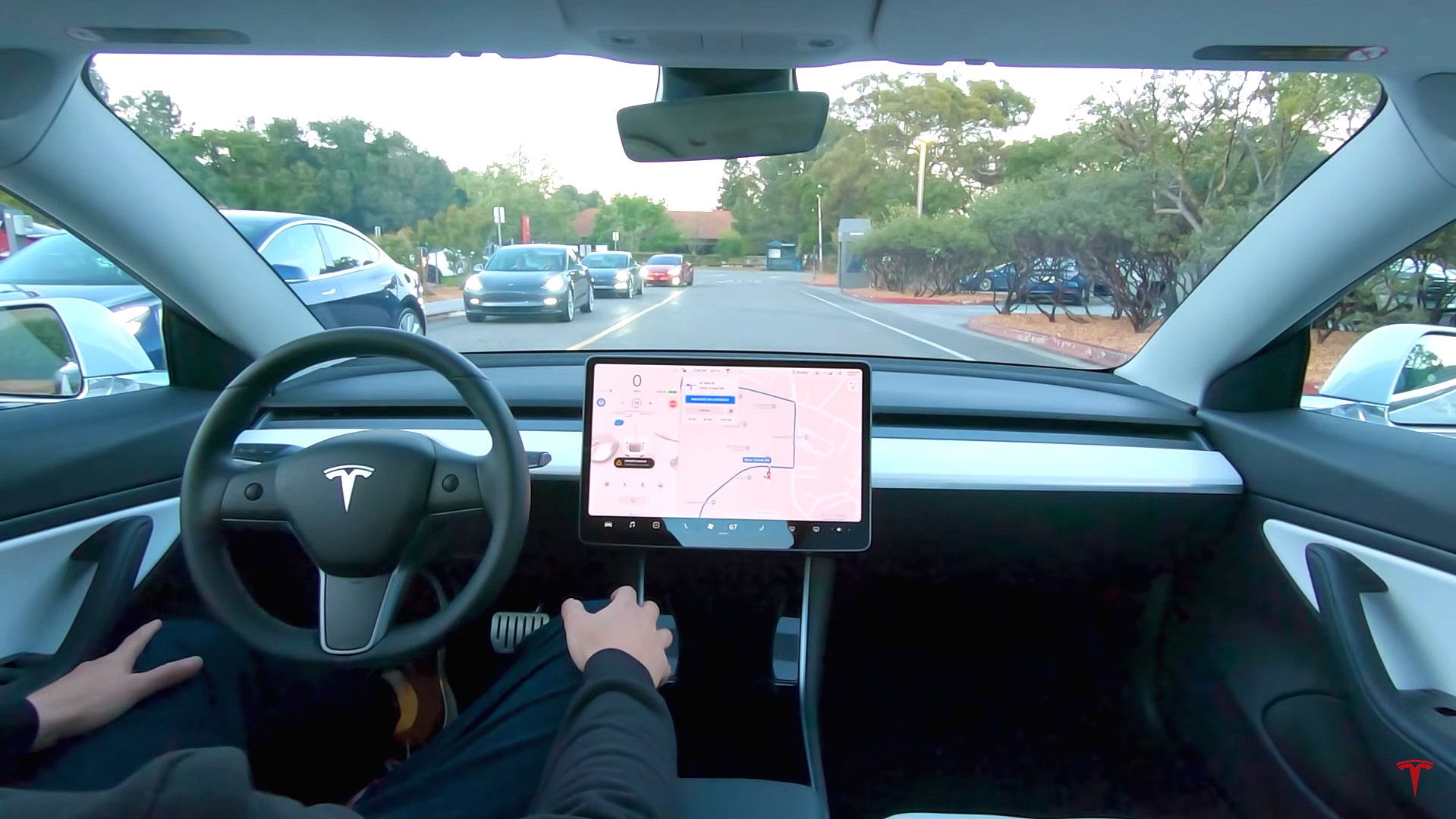
It appears that Tesla may be preparing to roll out some subscription-based services soon. Based on the observations of a Wales-based Model 3 owner who performed some reverse-engineering on the Tesla mobile app, it seems that the electric car maker has added a new “Subscribe” option beside the “Buy” option within the “Upgrades” tab, at least behind the scenes.
A screenshot of the new option was posted in the r/TeslaMotors subreddit, and while the Tesla owner in question, u/Callump01, admitted that the screenshot looks like something that could be easily fabricated, he did submit proof of his reverse-engineering to the community’s moderators. The moderators of the r/TeslaMotors subreddit confirmed the legitimacy of the Model 3 owner’s work, further suggesting that subscription options may indeed be coming to Tesla owners soon.
Did some reverse engineering on the app and Tesla looks to be preparing for subscriptions? from r/teslamotors
Tesla’s Full Self-Driving suite has been heavily speculated to be offered as a subscription option, similar to the company’s Premium Connectivity feature. And back in April, noted Tesla hacker @greentheonly stated that the company’s vehicles already had the source codes for a pay-as-you-go subscription model. The Tesla hacker suggested then that Tesla would likely release such a feature by the end of the year — something that Elon Musk also suggested in the first-quarter earnings call. “I think we will offer Full Self-Driving as a subscription service, but it will be probably towards the end of this year,” Musk stated.
While the signs for an upcoming FSD subscription option seem to be getting more and more prominent as the year approaches its final quarter, the details for such a feature are still quite slim. Pricing for FSD subscriptions, for example, have not been teased by Elon Musk yet, though he has stated on Twitter that purchasing the suite upfront would be more worth it in the long term. References to the feature in the vehicles’ source code, and now in the Tesla mobile app, also listed no references to pricing.
The idea of FSD subscriptions could prove quite popular among electric car owners, especially since it would allow budget-conscious customers to make the most out of the company’s driver-assist and self-driving systems without committing to the features’ full price. The current price of the Full Self-Driving suite is no joke, after all, being listed at $8,000 on top of a vehicle’s cost. By offering subscriptions to features like Navigate on Autopilot with automatic lane changes, owners could gain access to advanced functions only as they are needed.
Elon Musk, for his part, has explained that ultimately, he still believes that purchasing the Full Self-Driving suite outright provides the most value to customers, as it is an investment that would pay off in the future. “I should say, it will still make sense to buy FSD as an option as in our view, buying FSD is an investment in the future. And we are confident that it is an investment that will pay off to the consumer – to the benefit of the consumer.” Musk said.
Firmware
Tesla rolls out speed limit sign recognition and green traffic light alert in new update
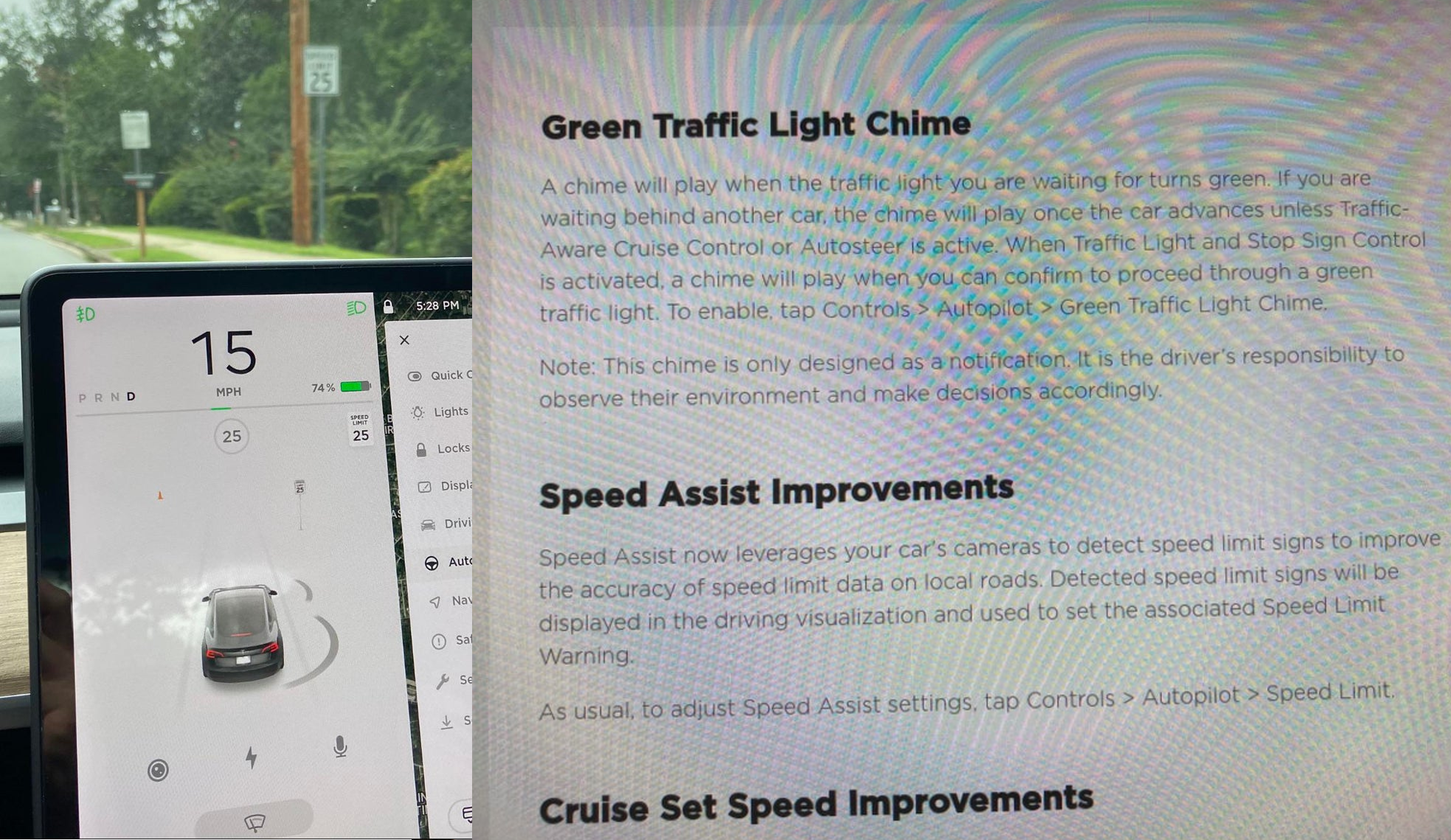
Tesla has started rolling out update 2020.36 this weekend, introducing a couple of notable new features for its vehicles. While there are only a few handful of vehicles that have reportedly received the update so far, 2020.36 makes it evident that the electric car maker has made some strides in its efforts to refine its driver-assist systems for inner-city driving.
Tesla is currently hard at work developing key features for its Full Self-Driving suite, which should allow vehicles to navigate through inner-city streets without driver input. Tesla’s FSD suite is still a work in progress, though the company has released the initial iterations of key features such Traffic Light and Stop Sign Control, which was introduced last April. Similar to the first release of Navigate on Autopilot, however, the capabilities of Traffic Light and Stop Sign Control were pretty basic during their initial rollout.
2020.36 Showing Speed Limit Signs in Visualization from r/teslamotors
With the release of update 2020.36, Tesla has rolled out some improvements that should allow its vehicles to handle traffic lights better. What’s more, the update also includes a particularly useful feature that enables better recognition of speed limit signs, which should make Autopilot’s speed adjustments better during use. Following are the Release Notes for these two new features.
Green Traffic Light Chime
“A chime will play when the traffic light you are waiting for turns green. If you are waiting behind another car, the chime will play once the car advances unless Traffic-Aware Cruise Control or Autosteer is active. When Traffic Light and Stop Sign Control is activated, a chime will play when you can confirm to proceed through a green traffic light. To enable, tap Controls > Autopilot > Green Traffic Light Chime.
“Note: This chime is only designed as a notification. It is the driver’s responsibility to observe their environment and make decisions accordingly.”
Speed Assist Improvements
“Speed Assist now leverages your car’s cameras to detect speed limit signs to improve the accuracy of speed limit data on local roads. Detected speed limit signs will be displayed in the driving visualization and used to set the associated Speed Limit Warning.
“As usual, to adjust Speed Assist settings, tap Controls > Autopilot > Speed Limit.”
Footage of the new green light chime in action via @NASA8500 on Twitter ✈️ from r/teslamotors
Amidst the rollout of 2020.36’s new features, speculations were abounding among Tesla community members that this update may include the first pieces of the company’s highly-anticipated Autopilot rewrite. Inasmuch as the idea is exciting, however, Tesla CEO Elon Musk has stated that this was not the case. While responding to a Tesla owner who asked if the Autopilot rewrite is in “shadow mode” in 2020.36, Musk responded “Not yet.”
Firmware
Tesla rolls out Sirius XM free three-month subscription
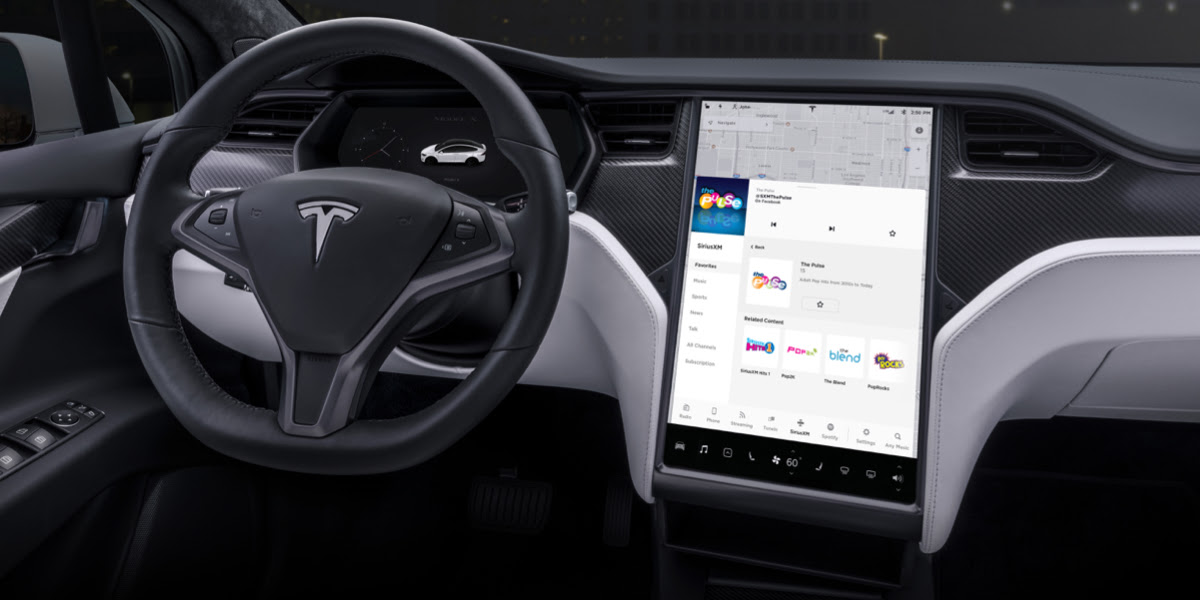
Tesla has rolled out a free three-month trial subscription to Sirius XM, in what appears to be the company’s latest push into making its vehicles’ entertainment systems more feature-rich. The new Sirius XM offer will likely be appreciated by owners of the company’s vehicles, especially considering that the service is among the most popular satellite radios in the country today.
Tesla announced its new offer in an email sent on Monday. An image that accompanied the communication also teased Tesla’s updated and optimized Sirius XM UI for its vehicles. Following is the email’s text.
“Beginning now, enjoy a free, All Access three-month trial subscription to Sirius XM, plus a completely new look and improved functionality. Our latest over-the-air software update includes significant improvements to overall Sirius XM navigation, organization, and search features, including access to more than 150 satellite channels.
“To access simply tap the Sirius XM app from the ‘Music’ section of your in-car center touchscreen—or enjoy your subscription online, on your phone, or at home on connected devices. If you can’t hear SiriusXM channels in your car, select the Sirius XM ‘Subscription’ tab for instruction on how to refresh your audio.”
Tesla has actually been working on Sirius XM improvements for some time now. Back in June, for example, Tesla rolled out its 2020.24.6.4 update, and it included some optimizations to its Model S and Model X’s Sirius XM interface. As noted by noted Tesla owner and hacker @greentheonly, the source code of this update revealed that the Sirius XM optimizations were also intended to be released to other areas such as Canada.
Interestingly enough, Sirius XM is a popular feature that has been exclusive to the Model S and X. Tesla’s most popular vehicle to date, the Model 3, is yet to receive the feature. One could only hope that Sirius XM integration to the Model 3 may eventually be included in the future. Such an update would most definitely be appreciated by the EV community, especially since some Model 3 owners have resorted to using their smartphones or third-party solutions to gain access to the satellite radio service.
The fact that Tesla seems to be pushing Sirius XM rather assertively to its customers seems to suggest that the company may be poised to roll out more entertainment-based apps in the coming months. Apps such as Sirius XM, Spotify, Netflix, and YouTube, may seem quite minor when compared to key functions like Autopilot, after all, but they do help round out the ownership experience of Tesla owners. In a way, Sirius XM does make sense for Tesla’s next-generation of vehicles, especially the Cybertruck and the Semi, both of which would likely be driven in areas that lack LTE connectivity.
-

 News3 days ago
News3 days agoTesla debuts hands-free Grok AI with update 2025.26: What you need to know
-

 Elon Musk1 week ago
Elon Musk1 week agoElon Musk confirms Grok 4 launch on July 9 with livestream event
-

 Elon Musk5 days ago
Elon Musk5 days agoxAI launches Grok 4 with new $300/month SuperGrok Heavy subscription
-

 News2 weeks ago
News2 weeks agoTesla Model 3 ranks as the safest new car in Europe for 2025, per Euro NCAP tests
-

 Elon Musk2 weeks ago
Elon Musk2 weeks agoxAI’s Memphis data center receives air permit despite community criticism
-

 News5 days ago
News5 days agoTesla begins Robotaxi certification push in Arizona: report
-

 Elon Musk2 weeks ago
Elon Musk2 weeks agoTesla scrambles after Musk sidekick exit, CEO takes over sales
-
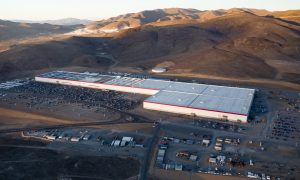
 Elon Musk2 weeks ago
Elon Musk2 weeks agoTesla reveals it is using AI to make factories more sustainable: here’s how




